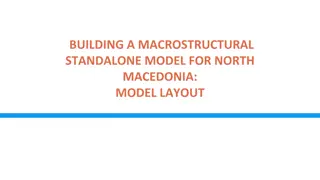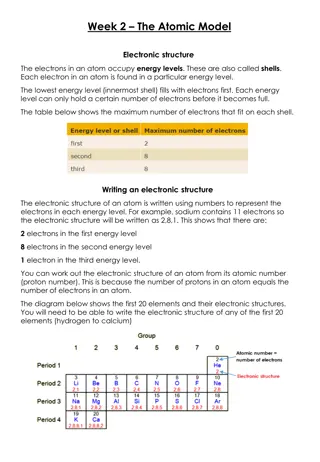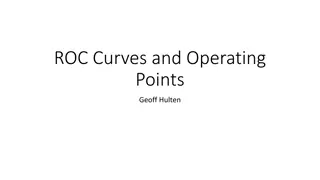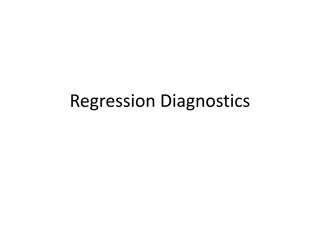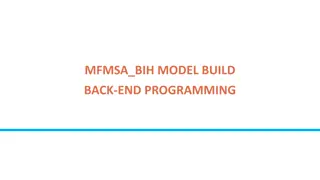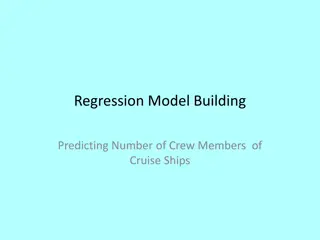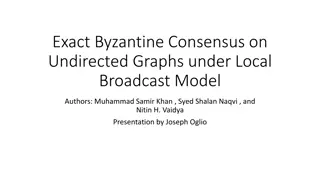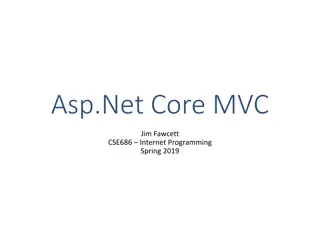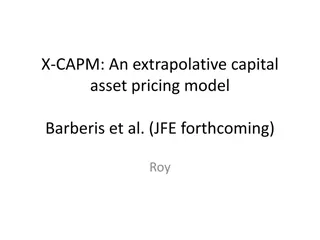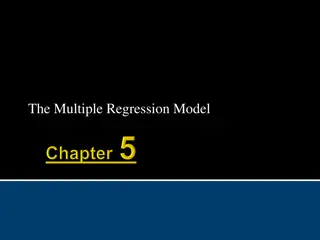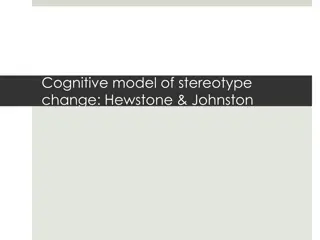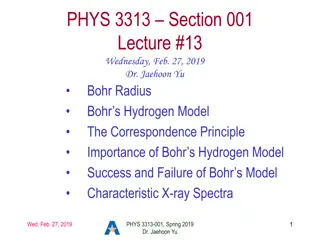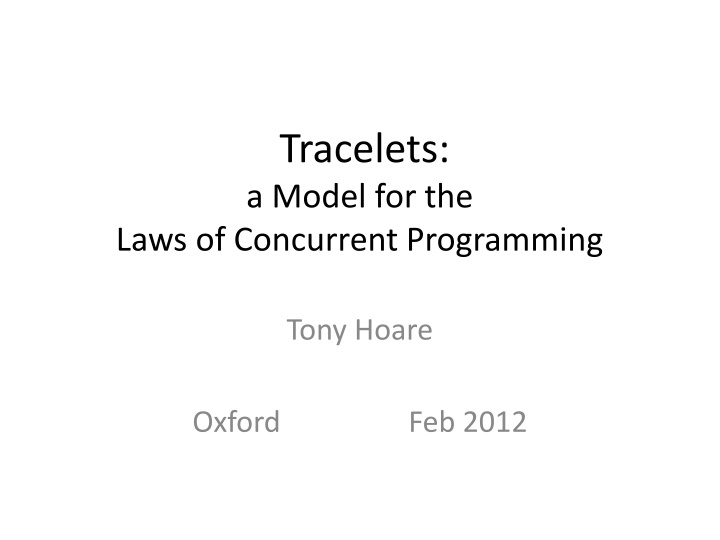
Laws of Concurrent Programming - Tracelets Model by Tony Hoare
Discover the Tracelets model proposed by Tony Hoare in February 2012, highlighting the relationship between events, dependencies, properties, and object behavior in concurrent programming. Explore how tracelets represent subsets of events, object usage, assignments, and more within program executions.
Download Presentation

Please find below an Image/Link to download the presentation.
The content on the website is provided AS IS for your information and personal use only. It may not be sold, licensed, or shared on other websites without obtaining consent from the author. If you encounter any issues during the download, it is possible that the publisher has removed the file from their server.
You are allowed to download the files provided on this website for personal or commercial use, subject to the condition that they are used lawfully. All files are the property of their respective owners.
The content on the website is provided AS IS for your information and personal use only. It may not be sold, licensed, or shared on other websites without obtaining consent from the author.
E N D
Presentation Transcript
Tracelets: a Model for the Laws of Concurrent Programming Tony Hoare Oxford Feb 2012
Our Universe E is a set of events that can occur in or around a computer during execution of a program drawn as boxes. D is a set of dependencies between the events drawn as arrows between boxes e --> f means f depends on e source, target: D --> E source(d) --> target(d)
Labels P are sets of properties of D or E e.g., the type of command executed the objects involved in the event the value of the data transmitted on the arrow labels:E + D --> P labels(e) are drawn in the box, labels(d) on top of the arrow
A tracelet is a subset of E , denoted by p, q, r . For example: a trace of a single execution of a program or of a single execution of a command or of a single object used in the execution I = { }, the tracelet that contains no event
An object is used by a program to store or transmit data e.g., a variable, a semaphore, a channel, Its behaviour is modelled by a tracelet containing some or all events in which it has engaged A trace of a complete program execution is the union of all the tracelets for every resource that it has used
Pictorially labels the allocation of an object. labels its disposal. All other events of its tracelet lie in between
A variable :=2 :=4 :=3 =2 =4 =3 =2 :=4 labels an assignment of value 4 =4 labels a fetch of value 4
Object names x:=2 x x x:=4 x:=3 x=2 x= 4 x=3 x=2 may be added to the labels
A variable :=2 :=4 :=3 =2 =4 =3 =2 The arrows from each fetch to the next assignment ensures prompt overwriting
Weak memory :=2 :=4 :=3 =2 =4 =3 =2 which does not occur in modern weak memories.
A Semaphore P V V P P is an acquisition of the semaphore V is a release (by the same owner)
A buffered channel !2 !4 !=3 ?4 ?3 ?2 !4 ?4 labels an input of value 4 labels an output of value 4
A single-buffered channel !2 !4 !3 ?4 ?3 ?2 Each output depends on prior input of the previous message
A complete program trace is the union of the tracelets for every command that it contains. The tracelet of a command can be analysed into sub-tracelets for each of its immediate sub-commands. The analysis determines whether the trace is a valid trace for the program.
Concurrent Composition = p q, provided that p q = { } p|q otherwise the analysis is invalid, because no event is an execution of two distinct commands. Theorem: | is associative and commutative with unit
Definitions e p, f q . e --> f p --> q = p => q = p = q or p is undefined.
Sequential Composition p ; q otherwise the analysis is invalid, because no event in execution of the first command can depend on any event in the execution of the second. = p|q provided not q --> p Theorem: ; is associative with unit
Example If x is a shared variable x := 3 ; x:=4 = x := 3 x := 4
Or, if blue arrows are equal, x := 3 ; x:=4 = x := 3 x := 4
Theorems p;q => p|q Proof: they are equal whenever not q --> p otherwise, lhs is undefined (p|p );q => p|(p ;q) they are equal when they are both defined if rhs is undefined, then q --> p which implies that q --> (p |q), therefore the lhs is also undefined.
Exchange laws p;(q|q ) => (p;q)|q proof similar (p|p );(q|q ) => (p;q)|(p ;q ) proof similar All exchange laws are derivable from the last, by substituting for p , or q , or for both q and q
Separating concurrency? r = p||q there is no arrow between p and q BUT this would prohibit shared variables p||q < p;q p ; (q||q ) < (p;q)||q the wrong way round! Let s postpone this problem = r = p;q & r = q;p etc.
A command is modelled by the set of tracelets of all its possible executions in all its possible environments. = { { } } x := 3 = { p | x :=3 labels(p)} x := y = { p | n. { x:= n , y = n } labels(p)}
Let P, Q, R, be commands P | Q = { (p|q)| p P & q Q } P ; Q = { (p;q) | p P & q Q } P \/ Q = { r | r P or r Q } P Q = r . r P => r Q All our theorems p => q also hold for P Q, because every variable appears exactly once on each side of the inequation.
Separation Let L be the set of red arrows they must not cross thread boundaries Blue arrows must cross thread boundaries Black arrows may cross either boundaries. Definitions of ; and | must be changed to ensure these rules
Dependency ordering Let e < f mean that there is a path of arrows from e to f . e <L f means the path consists of red arrows p <L q means e --> f, for some e p , f q
Interfaces of a tracelet p arrows(p) ins(p) outs(p) = = = s(p) u t(p) t(p) - s(p) s(p) - t(p) where s(p) = {d| source(d) p} t(p) = {d| target(d) p}
In pictures ins outs
Separating ; p;q outs(p;q) L = outs(q) L ins(p;q) L = ins(p) L Theorem: ; is associative and has unit = p|q provided that not q < p & outs(p) L = ins(q) L
Ok is a set of tracelets that are always preferred e.g., no overflow, no races, no divergence, etc. p => q means p = q or p is not defined or not q ok ok p;q ok = p ok & q ok
Separating concurrency e < f p*q ok p*q = p|q because that s the way it will be implemented! = there is a path of red dependencies from e to f = p ok & q ok & not p < q & not q < p if p*q ok
Lift to sets P => Q means p P. p ok => p Q otherwise q Q . not q ok & ins(q) = ins(p)

